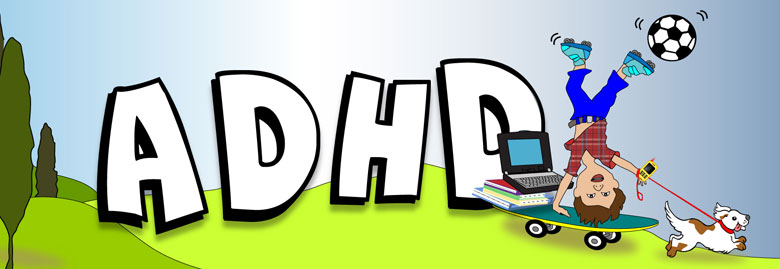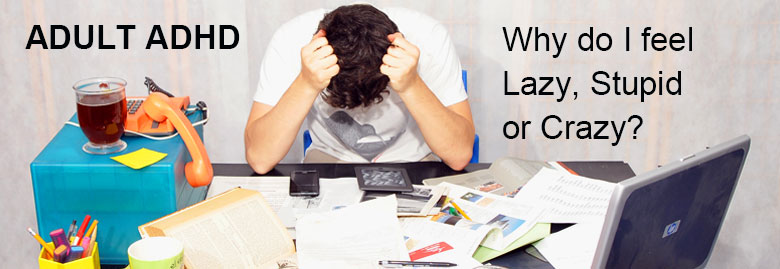Originally published in The Dyslexic Reader,
Issue 11 Copyright (c) Fall 1997-year DDAI.
Finding Order in an A.D.D. World
Att design: insert photo here
By Monti S. Bullock
In 1989, I discovered that I was an adult with A.D.D. This conclusion was not a diagnosis give by an M.D. or even a Ph.D but by a M.O.M. trying to uncover why my 3-year-old was more active, inquisitive, and adventuresome than any other child in our neighborhood. While reading a book on A.D.D., I came to the realization that what I was reading was more about me than my child!!
As an adult, I am still very impulsive, impatient, fluctuating between hyperactivity and hypo-activity, rarely finish projects, and have absolutely no organisational skills whatsoever! To compensate, (unbeknownst to myself 17 years ago), I married an obsessively detailed, compulsively organized, perfectionist engineer. We complement each other perfectly! I start tasks and he finishes them. I put things in the place where I want them to be and he straightens and neatens them. I have learned organization skills and he has learned how to let loose and have fun!
In my never-ending quest for the solution to my child’s learning disabilities, I stumbled across The Gift of Dyslexia. Because , you see, my 3-year-old A.D.D. was now a 9-year-old dyslexic. The book thrilled me and scared me. It was everything I had ever seen in my child, but no professional could address or explain. I was scared, though, because I, too, could move my mind’s eye about and visualize a slice of homemade cake with fresh coconut layered over the white icing. In fact, I found myself drooling (as I am now) as I imagined myself standing in my Granny’s kitchen savouring each and every bite. My olfactory nerves were tingling as I became aware of the aroma of the freshly baked cake and of my granddaddy breaking open the coconut and pouring the chalky coconut milk into a glass and shaving the dark brown skin from the white nut for my granny to grate …
I could rotate the cake in my mind, was I dyslexic, too?
Oh! No! Does that mean … no, I can’t be dyslexic! No, no, not me! I was reading before I even started school! I have a degree in Math, for heaven’s sake! I was the spelling-bee champion of my class. Not me!
So I grabbed the nearest left-brained, anal-retentive, obsessive-compulsive organizer I could find – my engineer husband – and tried this out on him. While he was washing the cars, vacuuming the inside, and polishing the hubcaps, I read to him the section about visualizing the cake. He, too, could see the cake from all angles.
Whew!! I know that he’s not dyslexic – so then, I must not be either!! I was still coming to grips with the fact that I was an adult with A.D.D.; I wasn’t about to accept that I might be dyslexic, as well.
On the other hand, there was no doubt about my son. We took Joshua to the Reading Research Council in April 1996. After a wonderful week, we returned home with video tapes and a Symbol Mastery Kit. I was ready to spread the word.
I was also ready for the changes I saw in Josh, some gradual and some momentous. What I was not ready for were the changes in myself.
I stopped anyone who would listen and told them about this wonderful program and even began to spend time ‘working’ with a few dyslexics. I didn’t recognise how this could help me, though.
Then, I began to train to become a Davis Facilitator. In March of this year, while working as the “giver” of a Davis Dyslexia Program during my certification training pod, my adult ‘client’ (also a person working towards certification) asked to approach the subject of math. We began with time, then moved on the sequence with no major pitfalls. You see, these are all ‘math’ based concepts. Concepts I have no qualms or worries with.
I thus approached order vs disorder with the same super-confident, arrogant, know-it-all attitude that I do most anything. (A great facade.) Except that I was totally baffled. How can I help a client through something I have questions about myself? Oh, sure, I had done this with young children. They didn’t catch my uncertainty, did they? Also, having just completed the advanced workshop, I realized how much I didn’t really understand. But, that’s learning, too, isn’t it?
If work is disorder … and work is good … then disorder is good!
So the questions began to flow! Do we model disorder at the same time as order? Do we order first and then do disorder later? Do we make disorder the complete opposite of order? Do we make a model of order for the first part of the definition and then immediately following that make a model for disorder from the same / but different part of the definition? Can we do disorder first and then go back and do order? Help! I think I’m drowning. I can’t even make order of what to do first and what steps to take.
Sharon Pfeiffer, the Davis Specialist supervising my training, came in to assist. She prompted me with questions for myself, not for the ‘client’.
“What is disorder to you?”
“Chaos!” I respond, almost flippantly.
“Is it?” she asks. “Is it always chaos?”
“Well, some times are more chaotic than others, but in general, I think that yes, disorder is chaos.”
Then she begins to break down the barrier for me and to open a window into my soul. “But can you work if there is order?”
“What do you mean?” (there it goes again … the understanding without the application.)
“If you’re studying and all the pens, paper and books are all nicely put away (things in their proper places, proper positions and proper conditions) can you work?”
I’m sure that I sat there for only 15 seconds, but it felt like 15 minutes. “No! You can’t work if everything is in order! You mean to say to me that work is disorder?! That disorder isn’t chaos, it’s work! But work is good! And if work is good and disorder is work, then disorder is good!!”
All those times that people have said to me, “What a mess!” – I was really doing something good! One can’t cook, sew, study, or even clean and organize closets if everything is in order! I had lived 36 years thinking disorder was chaos and that chaos was bad. Now I know that it is work! What a life-changing experience!
I’m not going to pretend that now I’m a totally organized, orderly person. That would be unrealistic for the passing of only a couple of months. But I have come to realize that work isn’t orderly. And that when I want order, I put things in their proper position, proper condition and proper place.
Now in my continued attempt at self-improvement and conquering A.DD. …
… I think that I will master the words organize and unorganized.
Are you dyslexic?
Passing the Davis Perceptual Ability Assessment does not mean that you are dyslexic. Many people are “potentially” dyslexic, but do not develop learning problems. Others have problems so mild or infrequent that they are not aware of them, or do not consider them to be significant enough to seek help.
Davis Facilitators use the Perceptual Ability Assessment to find out whether a person who has experienced perceptual or learning difficulties is a candidate for Orientation Counseling. Anyone who has this mental talent can learn and benefit from Davis methods.






